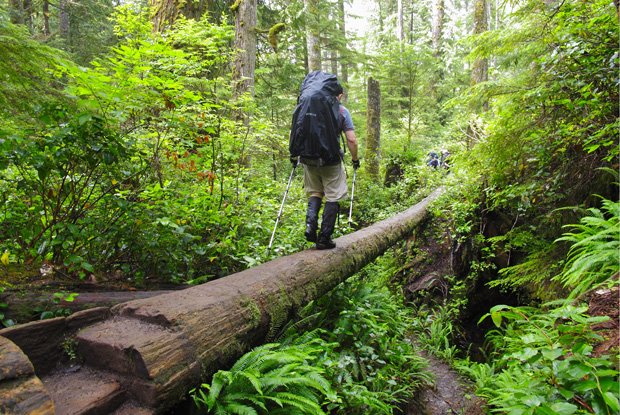Trekking basics: getting started

WHAT’S THAT? FAIRLY NEW to trekking, you say?
Well, before you and all that fancy new gear of yours heads off to tackle the Great Himalayan highways with nary a warm-up walk under your wilderness knife-bearing belt, there are a few tricks of the trekking trade worth considering before you take to the trail, some of which may just mean a little less pain and a lot more pleasure.
Getting started with trekking
Unless you were brought up by dingos, have the last name of Irwin/Grylls/Douglas, or you had a seriously rural upbringing, then the thought of stepping ever further into the wild may prick your self-preservation radar.
Perfect. That sense is the most important thing you need to lug into the bush. It’ll keep you alive. Everything else is just acclimatisation and skilling up.
Remember that people who rush into the forest all bolshie like because they’ve been pumped up by a few episodes of Man vs Wild end up dead. Baby steps, people. Baby steps will get you to Everest, if that’s where you want to go. So, if you are new to the trekking scene ease yourself in.
Joining a bushwalking club
These are great places to start your outdoor odyssey, allowing you to be surrounded by trekkers more experienced and knowledgeable than you. You’ll learn from their members while enjoying the safety-in-numbers factor.
Clubs publicise walk programs well in advance and welcome prospective members. Some clubs have equipment for hire. Bushwalking Australia’s (www.bushwalkingaustralia.org) State bodies have a network of nearly 200 clubs, so there is bound to be one that will suit you.
“Bushwalking clubs offer a non-threatening environment where a beginner can learn the skills needed, and build fitness and confidence to walk in some really interesting places,” says David Reid, Bushwalking Australia president, who notes that people signing up aren’t always newbies.
“There is a proportion of experienced people who are just getting back into walking after a lull in activity as well as those who want to make new social contacts with outdoors people and those of similar interests.”
Research what types of treks you want to do
Guided or independent? Local or overseas? Single day or multi day? Leisure bushwalk or more taxing altitude mountain trek? There’s a plethora of inspiration online and more guided trek operators than you can shake your walking stick at.
Choose a trek well within your limits to begin with and perhaps undertake a walk with a focus – you love birds, so a wetland walk in season may be the go.
Tour companies such as World Expeditions and Peregrine offer all styles of treks both locally and abroad for all levels of experience, including for families.
For a guide to independent walking in Australia, start at your local guidebook outlet or peruse.
Day treks: best for beginners
Begin on well-marked trails early in the day. This allows you to gauge your performance – your walking speed, your fitness level and your confidence in the bush.
It’s tempting for an enthusiastic beginner to go too far and too fast, too late in the day. If you leave no room for error it is easy to get into trouble – including an unplanned overnight stay. Regularly observe landmarks to refer back to should you become disoriented.
Trekking: make use of national parks
Most have well-marked trails with sign-in books or ranger stations. Even though you’re starting in sometimes well-tramped areas, they are protected parks for good reason: The geography and views encountered are always worth the walk and there are usually both short and longer trail options.
Here’s more information from the government’s national parks site.
Trekking: knowing the weather
Before heading off, check the day’s and the week’s forecast for the specific locality you’re hiking in and the region in general so you know what to expect and what clothing and gear to take.
Also, research the idiosyncratic weather patterns of the area – predictable onslaughts of strong westerlies in the afternoon or low-lying fog in the mornings, for instance. For Aussie weather, his the BOM (Bureau of Meterology).
Trekking: beginners’ navigation courses
Knowing your way around a map, compass and, secondarily, a GPS, is the bedrock of trekking safely and confidently.
The Australian School of Mountaineering offers a full range of navigation courses and each state bushwalking association can help with local courses through a variety of outdoor providers.
Trekking: make sure to break in your gear
Ensure it is correctly fitted to you, tested and ‘broken in’. And know how all your gear operates. It’s no good figuring out how that stove or tent works for the first time in the pitch black in -2 degrees Celsius.
RELATED STORIES

